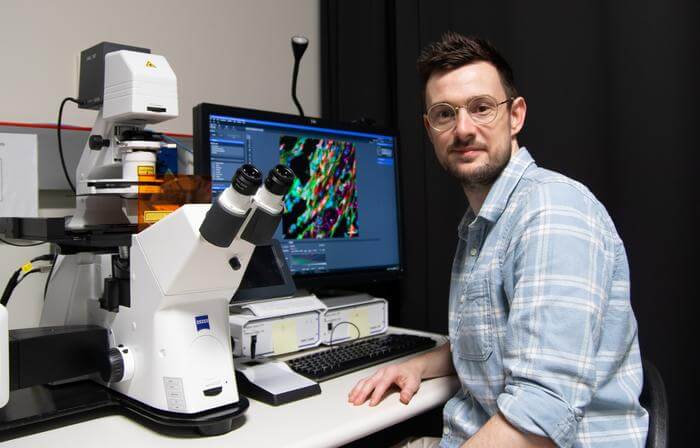Scientists have identified a molecule that plays a key role in how cells detect when they are being pushed or pulled which could lead to the development of future drugs for obesity, osteoporosis, and inflammatory diseases.
Researchers at the Victor Chang Cardiac Institute have finally shed light on how a small molecule regulates the sensors that are central to many processes in the body – including how nerve cells embedded in the skin sense when we are being touched.
They believe it will now be possible to design new therapeutics that could either ramp down or dial down the activity of the sensors, also known as PIEZO ion channels.
The first targets would be obesity and bone diseases such as osteoporosis.
Lead author Dr Charles Cox says: “These are really key molecules that constantly provide information to the brain such as where our bodies are in space, sensing touch and even pain.
‘This interacting molecule we have identified represents a switch enabling us to regulate these channels, widely expressed throughout the body, which is why it could be useful for a whole range of diseases in the future.”
Dr Cox and his collaborators used cutting-edge Cryo-electron Microscopy to find out how this protein binds to PIEZO ion channels.
Now that it’s been identified, it’s believed the protein can now be modified and developed into peptide-based therapeutics.
Dr Cox says: “We believe we will be able to boost the activity in the channels that are involved in the strength of our bones – which could not only help prevent osteoporosis it could help those already suffering.
“This novel mechanism could also help combat obesity an important risk factor for all cardiovascular diseases. As we eat food, our stomachs get stretched and molecules are triggered, telling the brain when the stomach is full. By boosting the activity of these molecules, we may be able to trigger the brain into thinking it was full far earlier mimicking satiety.”
Dr Cox and his team believe the molecule could also be adapted to target inflammatory diseases as well as cardiovascular disease in the future.
This discovery is documented in an article published in the scientific journal Science.


